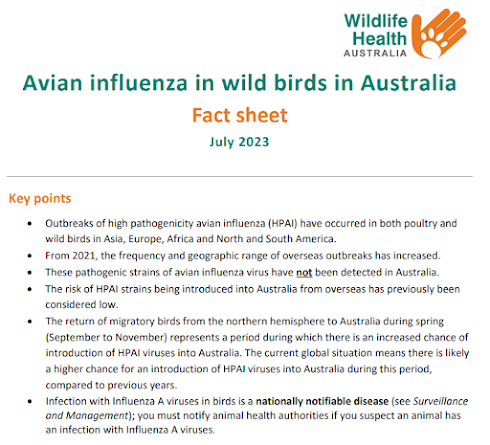
#17,733
Two months ago we looked at the the FAO/WOAH OFFLU Network's 14-page statement on the impacts, and challenges of HPAI facing South America and the strong likelihood that avian flu would soon arrive in the Antarctic region (see link below)
Southward expansion of high pathogenicity avian influenza H5 in wildlife in South America: estimated impact on wildlife populations, and risk of incursion into AntarcticaOvernight Shiloh and Sharon Sanders on FluTrackers posted reports from the British Antarctica Survey on the detection of HPAI (presumably H5) in the South Georgia & the South Sandwich Islands, which lie in the Antarctic region.23 August 2023
Further research turned up the following statement from the Government of South Georgia & the South Sandwich Islands twitter/X account, followed by a media release and statement on their website.
Highly Pathogenic Avian Influenza (HPAI) has been confirmed in brown skua populations on Bird Island, South Georgia
Following reports of several potentially symptomatic birds and unexplained mortality by British Antarctic Survey (BAS) staff, testing at the Animal and Plant Health Agency laboratories in Weybridge has been confirmed the presence of Highly Pathogenic Avian Influenza (HPAI) in brown skua populations on Bird Island, South Georgia. This are the first confirmed cases of HPAI in the Antarctic region.
The primary means of spread of HPAI is through natural pathways and it is likely from birds returning from their migration on the South American continent where the disease is widespread. On South Georgia the Government of South Georgia & the South Sandwich Islands (GSGSSI) has a tiered response in place to monitor and manage the outbreak. The most recent version of these protocols can be found in our Biosecurity Handbook.
GSGSSI and BAS continue to work together to monitor the spread of the disease and its impact on the Territory’s wildlife.
Full media release is available to view here [.pdf].
These stark faunal differences also extend to birds, reptiles, and even insects.
Importantly for avian flu, very few migratory birds appear to cross the Wallace line (see The Australo-Papuan bird migration system: another consequence of Wallace's Line).
Australia is separated from the Asian faunal realm by Wallace’s Line, across which there is relatively little avian migration. Although this does diminish the risk of high pathogenicity avian influenza of Asian origin arriving with migratory birds, the barrier is not complete. Migratory shorebirds, as well as a few landbirds, move through the region on annual migrations to and from Southeast Asia and destinations further north, although the frequency of infection of avian influenza in these groups is low.
Nonetheless, high pathogenicity H5N1 has recently been recorded on the island of New Guinea in West Papua in domestic poultry. This event increases interest in the movements of birds between Wallacea in eastern Indonesia, New Guinea, and Australia, particularly by waterbirds. There are frequent but irregular movements of ducks, geese, and other waterbirds across Torres Strait between New Guinea and Australia, including movements to regions in which H5N1 has occurred in the recent past. Although the likelihood of avian influenza entering Australia via an avian vector is presumed to be low, the nature and extent of bird movements in this region is poorly known.
As the following update from Wildlife Health Australia explains, the risks of seeing H5N1 are higher today than ever before. I've only posted the link and an excerpt from the 13-page PDF report, so follow the link to read it in its entirety.




